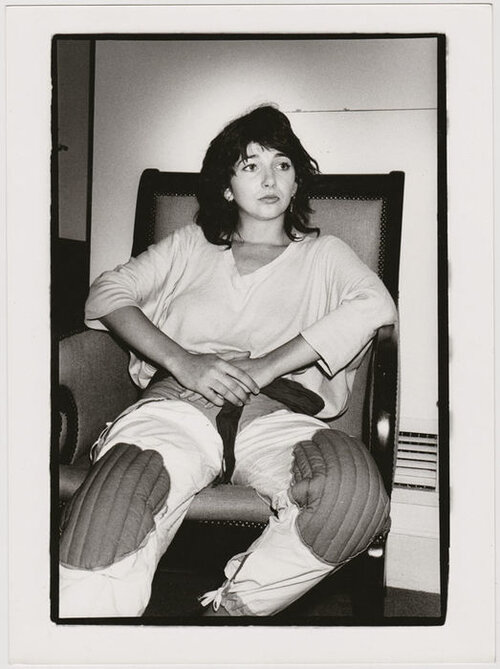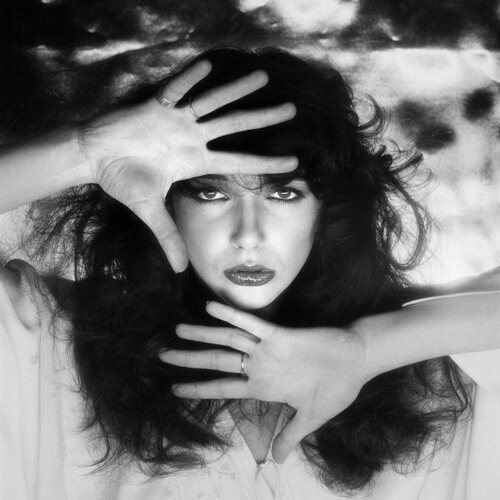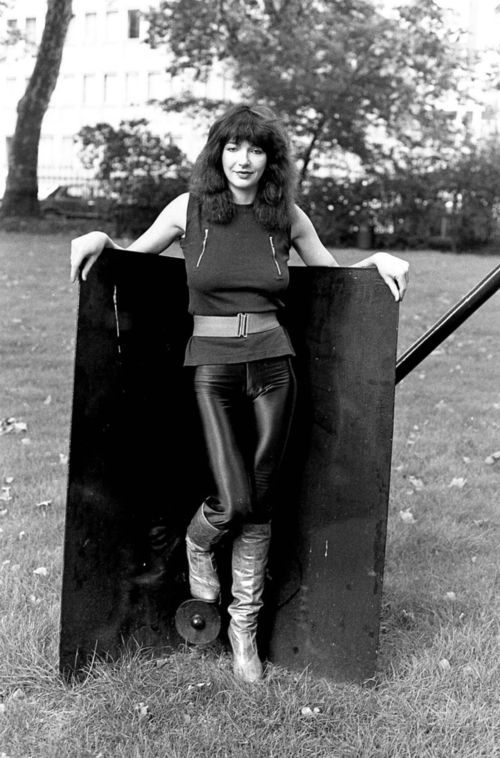FEATURE:
“She Knew Exactly What to Do”
PHOTO CREDIT: John Carder Bush
Kate Bush’s Babooshka and a Bold Evolution
___________
TO defend myself against those who will say…
PHOTO CREDIT: John Carder Bush
Kate Bush’s music had taken a leap before Babooshka was released as a single; to be fair, I take that point, but this was another big step from an artist who had made strident and significant leaps since The Kick Inside, her debut album, in 1978. The reason I am returning to Bush’s third album, Never for Ever, is that it turns forty on 7th September. I will focus more on the rest of the album a little later down the line, but I wanted to focus on its opening track and second single: the beguiling and bewitching Babooshka. Not too long ago, I penned a feature celebrating the fortieth anniversary of Breathing. This was the first single from Never for Ever, and it was released on 14th April (1980). Although Babooshka does not turn forty until 27th June, I have seen a few social media posts recently concerning Babooshka. There is a cool video – that I cannot see on YouTube – where Bush sings the song with an array of weird backdrops. Her dancing is fantastic, and it has given me a new love for a song that, until recently, I have not played much. I love all of Bush’s work, but I have been listening to other tracks on Never for Ever. Kate Bush has always been masterful when it comes to opening tracks, but I think Babooshka is one of her very best. It gets the album off to a flyer and, when you listen to the track and watch the video, we see this artist in a new light.
The first single from Never for Ever, Breathing, was a political song about a foetus observing nuclear war from inside the womb. Bush, as I have said before, did not dabble too much with political observation too much prior to 1980, and Never for Ever was a big development in terms of lyrical scope and confidence. Kate Bush produced the album alongside Jon Kelly. It was the first time she had co-produced one of her albums – she and Kelly co-produced the On Stage E.P. the year before. Babooshka reached number-two in the Australian charts; it got to number-five in the U.K. How many people could have seen Babooshka coming so soon after her debut album?! Whilst Wuthering Heights (The Kick Inside) and Wow were big hits and were/are unlike everything else, Babooshka remains one of Kate Bush’s most immediate and bold songs. Never for Ever is an album, as I will explain at some point, that gets overlooked and not written about in terms it deserves. Breathing is a phenomenal song, and it sort of blows you away with its emotion and heaviness. Army Dreamers, the third single from Never for Ever, was another political number (about young men being led to war); the reason Babooshka gets to me is the vocal delivery, the composition and video. I will explain more in a bit, but here is a bit of information on the song from the Kate Bush Encyclopaedia:
“Song written by Kate Bush. Originally released as a single on 27 June 1980 and subsequently included on the album Never For Ever. According to Kate, the song chronicles a wife's desire to test her husband's loyalty. To do so, she takes on the pseudonym of Babooshka and sends notes to her husband in the guise of a younger woman - something which she fears is the opposite of how her husband currently sees her. In her bitterness and paranoia, Babooshka arranges to meet her husband, who is attracted to the character who reminds him of his wife in earlier times. The relationship is ruined only because of her own paranoia.
Kate performed 'Babooshka' in various European programmes, including Collaro (France), Countdown (Netherlands) and Rock Pop (Germany). Her performance of the song in a Dr. Hook television special remains the first, and is memorable for the costume she is wearing: on her the right side she resembles a staid Victorian lady in mourning dress; on the left side a glittering, liberated young woman in a silvery jumpsuit, with bright lightning-streaks painted down the left side of her face. Her figure is lit so that only the "repressed" side of her costume is visible during the verses of the song, and mainly the "free" side during the choruses”.
I think one of the reasons Babooshka was such a success is that it has the rawness and immediacy of a track like Breathing, but there is a lot of beauty and intrigue. To me, the composition is made by adding Fairlight CMI and balalaika. The balalaika adds a sense of the exotic and foreign, whilst the introduction of the Fairlight was a big revelation. At this point, Kate Bush was becoming firm friends with Peter Gabriel, who owned a Fairlight. She was fascinated by its potential. The breaking glass sound adds something strangely romantic and unique to Bush’s work. She would use the Fairlight extensively from Never for Ever on, but Babooshka is the first time it is really heard and takes her music in a new direction. With terrific backing vocals (by Paddy Bush and Gary Hurst), wonderful electric bass from John Giblin, and Bush commanding at the front, there is such richness and story right through Babooshka. I think Babooshka is one of Bush’s most assured and accomplished vocal performances to that date. She teases and beautifully moves through the verses; portraying so many emotions and bringing the lyrics firmly to life. Prior to Never for Ever, we heard a bit of Bush’s more guttural vocal side; Breathing was the first track where it really came to the fore. Listen to the chorus of Babooshka and that lovely growl and gravel that kicks the chorus right through the gears.
IN THIS PHOTO: Kate Bush in 1980/PHOTO CREDIT: Andy Phillips
After a chaotic 1978 and 1979 – two studio albums, constant promotion, a live tour and live E.P. among Bush’s duties -, she gained more production control on Never for Ever. Her work was becoming broader and more adventurous, and Babooshka is the sound of an artist reborn and truly inspired. Kate Bush talked to Countdown Australia in 1980 and discussed the song in more detail:
“It was really a theme that has fascinated me for some time. It's based on a theme that is often used in folk songs, which is where the wife of the husband begins to feel that perhaps he's not faithful. And there's no real strength in her feelings, it's just more or less paranoia suspicions, and so she starts thinking that she's going to test him, just to see if he's faithful. So what she does is she gets herself a pseudonym, which happens to be Babooshka, and she sends him a letter. And he responds very well to the letter, because as he reads it, he recognises the wife that he had a couple of years ago, who was happy, in the letter. And so he likes it, and she decides to take it even further and get a meeting together to see how he reacts to this Babooshka lady instead of her. When he meets her, again because she is so similar to his wife, the one that he loves, he's very attracted to her.
Of course she is very annoyed and the break in the song is just throwing the restaurant at him... (...) The whole idea of the song is really the futility and the stupidness of humans and how by our own thinking, spinning around in our own ideas we come up with completely paranoid facts. So in her situation she was in fact suspicious of a man who was doing nothing wrong, he loved her very much indeed. Through her own suspicions and evil thoughts she's really ruining the relationship”.
I love the lyrics and the fact that it is not an ordinary love song or something commercial – something many of Bush’s peers were guilty of. This tale of deceit and suspicion is riveting. The composition sounds very male. Apart from a few higher-pitched notes, there is this lower-pitched vibe. The electric, fretless bass and the backing vocals firmly pushes away from the much more female and ethereal sounds of Bush’s work on The Kick Inside and Lionheart. Bush’s voice, indeed, seems more matured and lower than it did as recently as a year or two before Babooshka came out. It is the video that really takes the song over the top. Prior to Babooshka, Bush had already released these arresting and beautiful videos – Wuthering Heights, The Man with the Child in His Eyes and Breathing among them -, but Babooshka stands as one of my favourite videos from her.
In the video, Bush plays the role of the embittered and more timid wife; dressed in a black veil and standing beside a double bass (which represents her husband). She turns and plays with it, but when the chorus bursts through, Bush is transformed into this almost warrior-like character. The costume is sparse – a mix of the risqué/racing and empowered -, and her eyes are alive and bright. I think eyes, oddly, are part of Bush’s weaponry. Look at how open and expressive they are in the videos for Wuthering Heights and even Them Heavy People (from The Kick Inside; the track was released as a single only in Japan). In Babooshka, Bush’s facial mannerisms and her peerless eyes add their own dimensions and truths. That visual transformation from the verse into the chorus still shocks and amazes to this day. Almost forty years ago, this incredible video was being played, and I can only imagine how people reacted the first time they saw it! Although Bush would write better songs and more memorable videos, I think Babooshka was a bit of a watershed moment. Not only because we get to hear the Fairlight take flight: Babooshka (and the Never for Ever album) found Bush covering new ground and pulling more towards the sort of sound we would hear on The Dreaming (1982). In June, it will be forty years since Babooshka was released as a single – a few months after that, the public received Bush’s marvellous third album. To this very day, Babooshka remains…
A staggering and truly important moment in her career.





























































































































